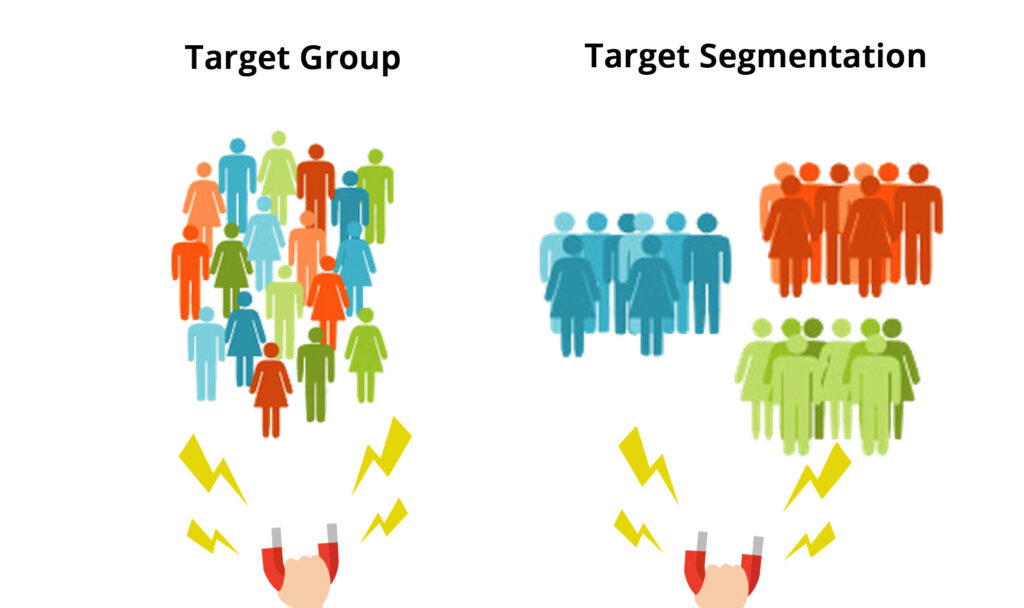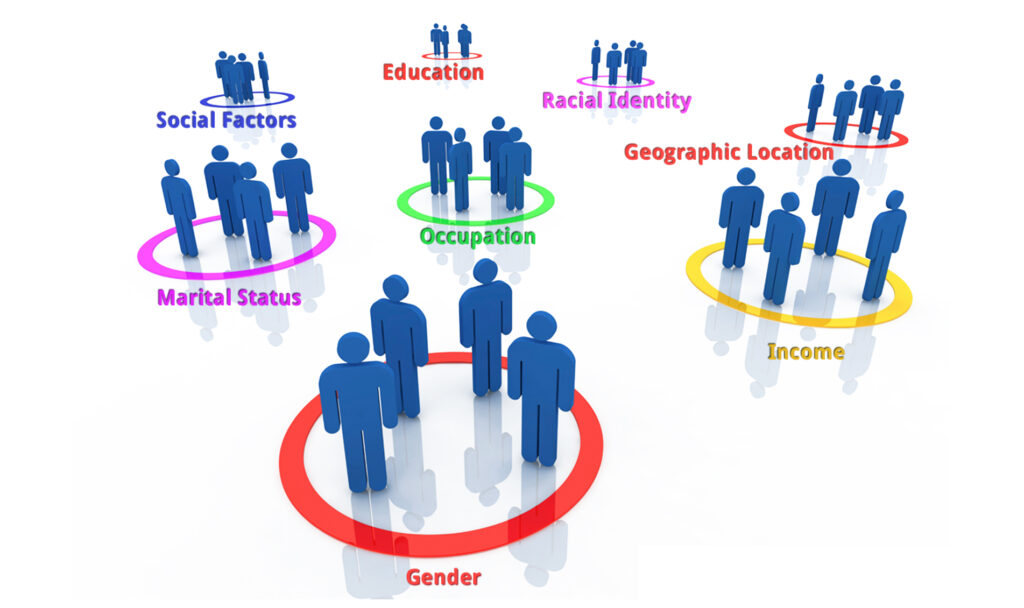
Segmentation – why is it important and how do you do it in the best possible way?
Segmentation - why is it important and how do you do it in the best possible way?
Do you want to hit your target audience strongly and create effective marketing strategies? Then you need to have control over the segmentation of the market and your target audiences.
By segmenting your current and potential customers, you can become wiser about their needs and expectations – and that’s crucial to creating a marketing strategy.
What is segmentation and why is it important to you?
Okay, first we just need to have established what segmentation really means. In short, segmentation simply means that you divide something into different units and segments. Segmentation is often used in marketing and can be used to divide your customers and potential customers into different entities and audiences so that you hit them as best as possible. The segmentation can be used in your overall content marketing strategy , your email marketing and all your other forms of marketing. So you divide the market into different segments – that sounds simple enough, right?
A selection of the benefits of segmentation:
- Good segmentation allows you to focus on the customers that give you the best results and the greatest ROI.
- The segmentation allows you to target your communication to the selected segments and hit the right tone-of-voice in your newsletter , blog posts and the like.
- You can target the development of your new products or services so that they meet the wishes of the target group
As a business, you have limited resources, so it does not make sense to shoot with a shotgun and try to hit everyone. On the other hand, it makes sense to hit your specific target group so that you use your resources in the best possible way – and you avoid spending time and money on customers who are not interested in your product or service.
If you want an effective marketing strategy, it is crucial that you have a good customer segmentation. It is not longer.

What is the difference between target groups and segmentation?
It is important to state that target groups and segmentation are not the same. However, they overlap in several places, and can with good reason create confusion.
Let’s make it as specific as possible: You can segment a broad audience by dividing it into smaller subgroups based on common characteristics. Segmentation can therefore be used as a tool to make your target audience even more accurate.
In the case of e-mail marketing, for example, segmentation can be done with a view to customer behavior, and you can e.g. segment by who last visited your website, looked at a product or bought something within the last week – and in this way target your emails to a specific segment. Here, your target group may well be larger, while the segmentation addresses a specific segment in the target group.
How to segment your target audience
The first step in the direction of good segmentation is to find your target group – and possibly more target groups, if it is relevant to your company. You can segment your target audience by mapping and researching your customer’s persona and their place in the customer journey. It is in the combination of these steps that you can find and segment your target audience. So you have to dive into what is often called buyer persona and lifecycle stage:
Buyer persona:
A persona represents the different types of purchases that exist in your buying process. So it’s a representation of your dream customer. This applies to demographic data, but also your person’s work and everyday life. For example, you can ask yourself the questions: Does our persona most often use a laptop or smartphone? Does he have a green agenda? Does he value offer or quality the most? You can read a lot more about how to create a persona, in our previous blog post.
Lifecycle stage:
The phase where your lead is in the buying phase. Here, your communication must depend on what phase of the life cycle the lead is in. So it is very much about knowing all the parts of the customer journey .
A good start can be to connect your persona with the lifecycle stage and in that way analyze who the lead is exactly in relation to goals, interests and demographics. In the context of this, you examine how the lead communicates with your business. In the coupling of the two, you get all the way around the customer’s behavior and buying journey – and this can help set the agenda for your segmentation of the target group.
Get wiser on the segmentation process
The segmentation process consists of several phases:
- Collection of market information
- Keep track of your segmentation criteria
- Selection of segmentation criteria.

First things first: gathering information
Before you begin the actual segmentation, it is important to know the market right down to the fingertips. You can gather information about the market through, among other things, interviews, surveys and the like. You can also get your information from secondary sources such as industry associations, analyzes from organizations, etc.
In the bottom funnel, your clear focus must therefore be on sales and conversion. Win them over!
Demographic data:
Clearly delimited data such as age, gender, education, job, housing, income, language and religion. Here you should be aware that today it can be difficult to segment based on demographic data, as it is also very much about the customers’ lifestyle, buying habits and usage patterns.
Geographical data:
This is of course about where in the country the customers are, but it can also be about seasons and dates.
Psychographic data
This is about the customers’ lifestyle, including what they are interested in, who they are personally, their values and ethics. If you have control over the psychographic data, you can much more easily hit some emotional touchpoints in your marketing. For example, it could be about the environment and sustainability.
Behavioral data
Is about how customers act when they buy and use your products, including buying behaviors, consumption patterns and usage situations.
Behavioral segmentation is particularly relevant in email marketing and on site segmentation. For example, it can help to demonstrate how customers interact with a particular product. Here you can segment according to how often they buy, whether they have opened or clicked on your emails or visited a particular subpage. With this type of segmentation, you can hit your customers more precisely by, for example, sending them emails with their favorite products based on their buying behavior.
In addition, it has become more and more important to take a look at technographic segmentation criteria, which are based on customers’ technological knowledge and media habits. This applies both in relation to the traditional media and how their habits are online and on social media. The technographic data is also relevant for the B2B segmentation.

B2B segmentation – what should you focus on there?
Do you have a B2B business? When it comes to B2B segmentation, the exact same “rules” do not apply. Here, the decision-making process is often much longer than it is with B2C, and the segmentation is therefore also a bit different because you have to dive into some other types of data.
You can still use the above data if you need to hit certain people in a company – which are often people like middle managers, sales managers, buyers, etc. But you can advantageously add data that moves around the company:
- Geographical location = This criterion may be particularly relevant for SMEs, as logistical challenges may be difficult to overcome.
- Company size and number of employees = Can be important, in relation to how many resources you need to spend on the customer, and how much you can standardize your product.
- Industry = Industry is a simple way to group companies.
- Production = This is about finding out how important your product is to the customer and how their buying process is.
- Purchasing = How does the company buy in, and what does it emphasize in that context? What are the company’s purchasing needs? Which is more important – the price, the reliability or the quality?
When it comes to B2B segmentation, you may also want to consider whether you should run the traditional segmentation or run exclusively account-based marketing where you focus on very few but large customers. It especially makes sense if you are a large B2B business where a single customer can create really high value. Here, the customer journey is often long and complex. You can read more about account-based marketing in our previous blog posts and learn more about whether your segmentation needs to be narrowed down more.
How do you choose the segmentation criteria?
You need to be careful about using too many segmentation criteria as it can be difficult to keep track of them and then you will again be using too many resources. A good rule of thumb, on the other hand, might be to use one or two primary segmentation criteria and a few secondary ones.
It may seem a bit confusing to assess which criteria make the most sense for you. But keep in mind that these must be criteria that are of great importance to customers’ purchases, and criteria that can be used to create messages that hit a segment very precisely.
When it comes to figuring out which segmentation criteria make the most sense, qualifying them can be beneficial. You can do this by dividing them by where you get the greatest financial benefit. Here you need to consider the segment’s size and growth potential and consider whether you can obtain data about the segment at all.
You need to be aware of that too
Segmentation requires that you have various programs and software that can handle the large amounts of data you need to dig up. There are a myriad of methods and tools for segmentation. Among other things, you can use Google Analytics or other types of web analytics tools that can generate detailed statistics about user behavior on your website.
You should also remember to test whether the representativeness and reliability of your data is in order before you start segmenting after it. You must continuously analyze, build and work with the data you collect, so that you are sure that your segmentation is correct and updated according to exactly your target groups.
Jump into segmentation
Then there is only left to get you thrown into the segmentation itself. This is the basic foundation you need to lay before you can reach your target audiences, use as few resources as possible and create effective marketing strategies. Without segmentation, you grope blindly and misuse your resources. So it’s just getting started.
Do you still feel that it can seem a bit confusing? We can well understand that. There are many processes you need to keep track of in the segmentation. If so, we are ready to help you segment your target audience.


